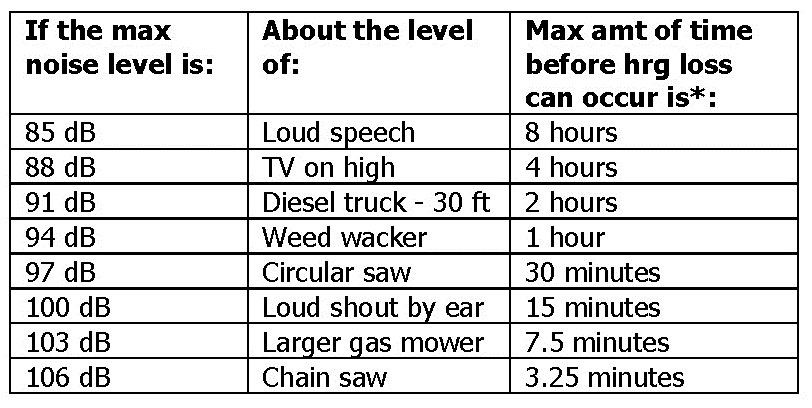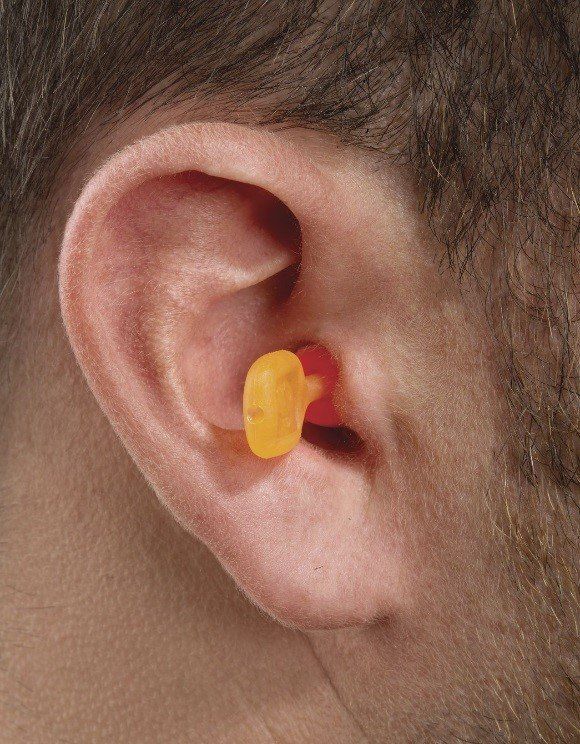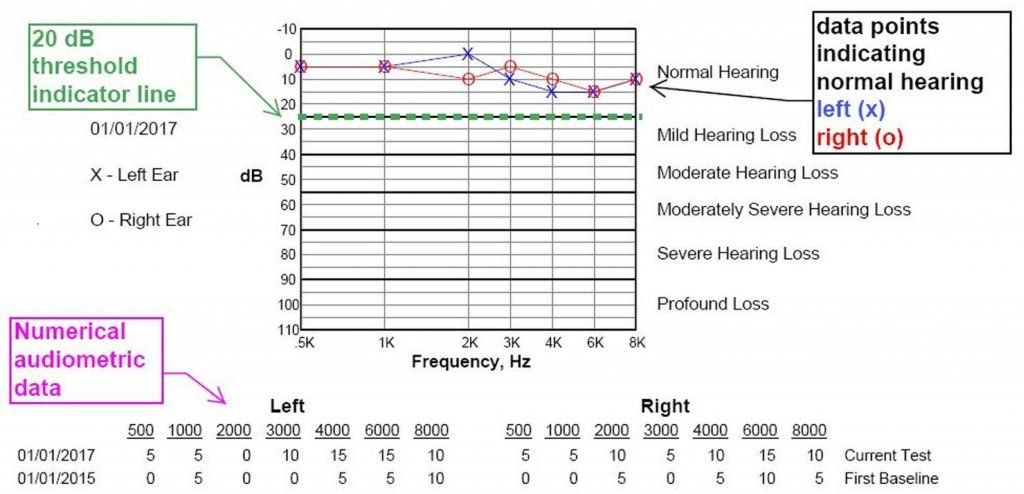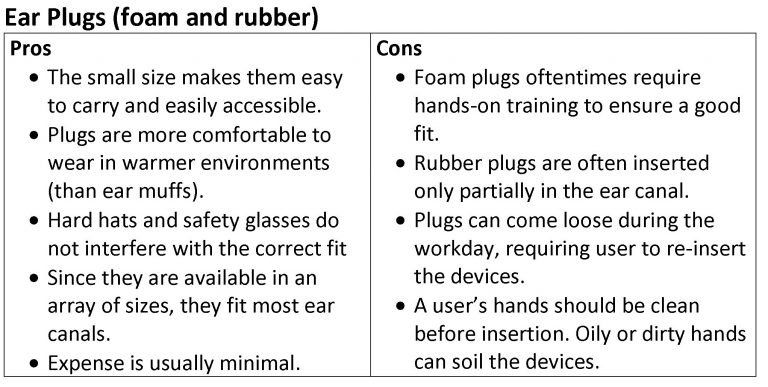Blog
WE'RE HERE TO HELP
Contact Us
Thank you for contacting us.
We will get back to you as soon as possible.
We will get back to you as soon as possible.
Oops, there was an error sending your message.
Please try again later.
Please try again later.
02 Sep, 2020
Aside from the obvious benefits of protecting employees’ hearing, did you know that hearing conservation programs also provide added health bonuses for employees? Believe it or not, the use of hearing protection devices (HPDs) has also been found to improve employees’ physical health, decrease workplace accidents and reduce absenteeism! According to research conducted in various industrial environments, these “extra-auditory” benefits have been well documented. According to research conducted by Jansen in his 1961 study, Adverse Effects of Noise on Iron and Steel Workers, he examined the health records of 1,005 iron and steel workers in “very noisy” and “less noisy” environments. In the “very noisy” group, he discovered a 5% to 15% higher occurrence of peripheral circulation problems, heart problems and equilibrium disturbance. Cohen, in his 1976 study, The Influence of a Company Hearing Conservation Program on Extra-Auditory Problems in Workers, compared the pre-HPD program statistics of job injuries, medical problems and absences to those of the post-HPD program. Studying the data of 434 boiler plant employees who were exposed to high noise levels both before and after the HPD program was implemented, he found there were fewer job injuries and medical issues, and reduced absenteeism. Comparing the injury data of the pre- and post-HPD implementation, Cohen found the use of HPDs actually reduced the number of workplace mishaps. He noted, “This appears to counter the notion that wearing HPDs could increase the likelihood of accidents by attenuating not only noise, but also the audibility of sound signals depicting danger.” As you can see, hearing protection devices can provide employees with extra benefits including: Reducing the incidence of workplace injuries; Improving overall physical health; Decreased absenteeism. It makes sense to implement a hearing protection program for your employees to reap these extra benefits. Images courtesy of Honeywell Inc.

02 Sep, 2020
Sound is measured in decibels (dB). According to NIOSH, eight hours of exposure to noise at 85 dB can damage hearing. As noise levels increase, the allowable exposure time before hearing loss occurs decreases. *Please note that these exposures assume the employee is not wearing hearing protection. So, which scenario do you think is worse in terms of hearing damage—working in 85 dB of noise for 8 hours or using a chain saw (106 dB) for 5 minutes? That is, of course, if one is not using hearing protection devices (HPD). For the employees who use HPDs, many do not use these devices correctly. Ear muffs are typically used at a shooting range. Since safety glasses are also worn, the amount of protection is reduced because glasses create a gap or break in the seal of the muffs allowing noise to enter the ear. If foam plugs are worn correctly, typically, more protection is provided. Mobilear can educate your staff on the correct use and type of hearing protection appropriate for their job. Annual hearing testing is vital to determine if hearing is changing due to noise exposure. Hearing testing also assesses whether HPDs are being used correctly and/or whether a HPD offering greater protection is necessary. Contact Mobilear for information regarding a hearing program or just for advice on HPDs and hearing. The cost of implementing a hearing program is minimal compared to saving your employees’ hearing, which is invaluable. So which is worse? Exposure to the sound of the chain saw for 5 minutes causes more damage to hearing than 8 hours of exposure to 85 dB of noise .

02 Sep, 2020
As you read in the previous blog post, noise is measured in decibels. The NRR is a number which predicts the amount of protection a given hearing protector will provide. The higher the NRR, the more protection a user will be provided.What’s important to realize is that this number is derived from laboratory testing and doesn’t necessarily take into account some of the real life situations that occur with hearing protection users. A significant loss of protection occurs when hearing protection is not worn correctly. Have you seen employees with the foam plugs barely in the ear canals? If these employees were to bend over, the plug would probably fall to the ground. What about an ear muff user who also is wearing a baseball cap and safety glasses, and has a beard? You can almost put a finger in the gap created between the ear muff and the cap, glasses and beard. Appendix B of 29 CFR 1910.95 Occupational Noise Exposure; Hearing Conservation Amendment; Final Rule provides formulas to determine the protected noise exposure. Unfortunately, these formulas do not take into account that there’s a good chance the hearing protectors are not going to be worn exactly as they would in the laboratory. In fact, it is noted in the Hearing Conservation Amendment “The employer must remember that calculated attenuation values reflect realistic values only to the extent that the protectors are properly fitted and worn.” As a result, manufacturers of hearing protectors are recommending the following formula used to assess protected exposure. The formula is presented below with an example: NRR of hearing protector: 31 dBATWA: 95 Step 1: Subtract 7 from the NRR 31 – 7 = 24 Step 2: Divide this number by 2 24/2 = 12 Step 3: Subtract that number form the dBATWA: 95 – 12 = 83 Using this calculation, the employee’s protected noise exposure would be 83 dBATWA, which is below OSHA’s Action Level of 85 dBA. OSHA states an employee’s protected noise exposure should be 90 dBATWA or less. Since the promulgation of the Hearing Conservation Amendment, research indicates the human ear is likely more sensitive to noise and using 85 dBA dB as the target protected noise exposure would be a more conservative and smarter choice. Now, let’s say you’re wearing ear plugs and ear muffs together. You don’t simply add those two NRR numbers together. You simply add 5 dB to the higher of the two NRRs. So if the NRR of ear plugs is 30 and the NRR of the ear muffs is 25; add 5 to 30 and use 35 dB as the NRR in the calculation. NRR of hearing protector with higher NRR: 30 Add 5 for hearing protector with lower NRR: +5 New NRR 35 dBATWA: 95 Step 1: Subtract 7 from the NRR 35 – 7 = 28 Step 2: Divide this number by 2 28/2 = 14 Step 3: Subtract that number form the dBATWA: 95 – 14 = 81 Using this calculation, the employee’s protected noise exposure would be 81 dBATWA. Overall, hearing protection works as well as the user’s ability to insert them properly and to wear them at all times when in the noise. Take a walk through the plant to see how hearing protection is being used. Does it look like this?
02 Sep, 2020
“OSHA Compliance Through Hearing Testing and Protection,” is a new video presentation created by Sue Zurales, president of Mobilear, Inc. Available through the Illinois Manufacturers’ Association website, this video is designed to educate management, safety personnel and employees on the areas involved in a hearing protection program. In this informative video, Ms. Zurales outlines the parameters of an effective hearing protection and training program. The topics covered include the five parts of the hearing conservation amendment (OSHA 29 CFR 1910.95) regarding employers’ responsibilities to safeguard worker hearing. These areas include: Noise Monitoring Hearing Testing Employee Educational Training Recordkeeping Hearing Protection Devices Also covered is how to properly wear hearing protection devices, including both ear plugs and ear muffs. It also details what individuals should be aware of to ensure the devices are worn correctly. Please click on the link below. Click to view video Need to get started with your hearing compliance program? Let Mobilear help. Contact our office at 630-241-0990 or go to our website: www.mobileartesting.com . For more information about the Illinois Manufacturers’ Association, please visit: www.ima-net.org .

02 Sep, 2020
When Mobilear performs audio testing, a notification letter is given to the tested employee to inform him or her of the audiometric test results. In addition to the numerical audiometric data, a chart provides a visual interpretation of those results. The information below includes an example of a graph or audiogram along with the numerical data that Mobilear provides to the employee. The loudness level of sound is measured in decibels or dB, whereas the pitch or frequency of a sound is measured in Hz. The blue and red lines indicate the data points of the left and right ears, respectively. The numerical data of the charted information is indicated by the pink box. Generally, numbers between 0-25 dB or less are considered normal hearing. As in the chart below, the lines shown ABOVE the 20 dB measurement (green line) indicate that this person’s hearing is in the normal range. Numbers greater than 25 dB indicate a hearing loss. If a change in hearing is noted, lines BELOW the 25 dB measurement (green line) indicate that a hearing loss has occurred. Please note that the degree of hearing loss can only be interpreted by a licensed or certified audiologist, otolaryngologist, or other physician. The annual test results are provided along with the first test results (or baseline test). The purpose of conducting the testing is to look for changes in hearing according to guidelines set by OSHA. Minor variations between the numbers from year to year are not significant. For example, a score of 35 at the 3000 range in 2005 which increases to 40 at the 3000 range in 2006 is not considered a significant change. OSHA looks at the average change in hearing. Following is an explanation of OSHA guidelines and hearing loss classifications. Mobilear’s notification letter also indicates whether any changes in hearing have occurred since the baseline test. If a change in hearing has occurred, Mobilear will contact you, the company, to discuss the necessary follow-up protocol. Mobilear also applies Medical Referral criteria to the test results. If the results trigger this criteria, a paragraph is included in the letter recommending the employee check with his or her physician. It is the responsibility of the individual employee to follow up on medical referrals. The letters can be customized to include additional information specific to your company. Let us know if you would like to modify your current letters and personalize them with your company information or follow-up. We hope this helps in explaining the audiometric test results your employees. As always, if you have any questions, please contact Mobilear at info@mobileartesting.com or 630-241-0990.
mobilear inc | All Rights Reserved |
Created by Olive + Ash.
Managed by Olive Street Design.

